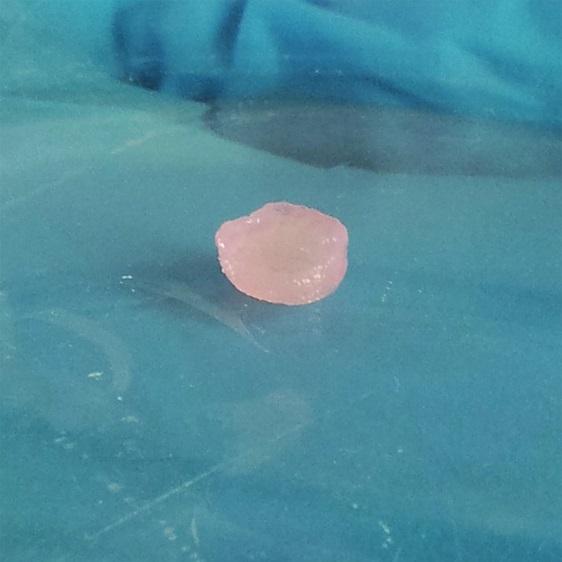

Engineered cartilage tissue at Umeå University.
Credit: Janne Ylärinne
Articular cartilage is tissue that is found on all the joint surfaces in the body. Since the tissue is not supplied with any blood vessels, it has a low self-repair capacity. Joint injuries and wear often damage cartilage tissue, leading to a condition called osteoarthritis.
In 2012 in Sweden, 26.6 percent of all people age 45 years or older were diagnosed with osteoarthritis. In serious cases, osteoarthritis can mean the loss of practically the entire cartilage tissue in the joint. While the condition causes pain and immobility for the individual, it also burdens society with accumulated medical costs.
“There is currently no good cure for osteoarthritis,” says Janne Ylärinne, doctoral student at the Department of Integrative Medical Biology and author of the doctoral dissertation.
“Surgical treatments may help when the damage to the cartilage is relatively minor, whereas joint replacement surgery is the only available solution for people with larger cartilage damage. However, artificial joints only last for a couple of decades, making the surgery unsuitable for young persons. So we need a more permanent solution.”
Tissue engineering provides a possible solution to osteoarthritis. In their experiments, the researchers at Umeå University made findings that provide useful information for efforts to develop new methods to produce cartilage-like “neotissues” in a laboratory environment.
In the engineering process, the cells, the signaling molecules and the scaffold, i.e. artificial support material, are combined to regenerate tissue at the damaged site in the joint.
The process is difficult and much of what constitutes suitable growth factors and a mechanical loading environment is still unknown. Today, there is a huge variety of available synthetic and natural scaffolds. It is also unclear whether stem cells or primary cells are best suited.
Using primary bovine chondrocytes, i.e. cartilage cells from cows, the researchers improved methods to grow cartilage tissue in a laboratory environment, producing tissue similar to tissue normally present in the human joints. In future, these results may help the development of neocartilage production for actual cartilage repair.
For this, stem cells could be grown to provide unlimited amount of material for tissue engineering. However, more research is needed to improve the tissue quality and make it more structurally similar to the hyaline cartilage found in the human body.
###
Janne Ylärinne comes from Sonkajärvi in Finland.















